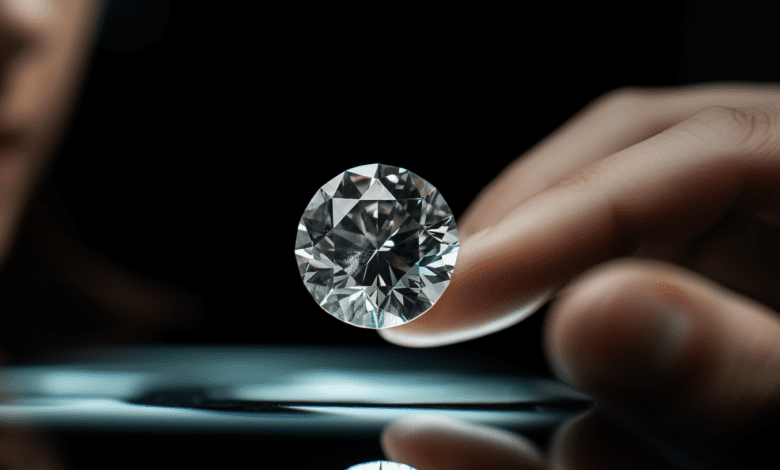
Understanding the Different Diamond Shapes
Diamonds are treasured for their brilliance, fire, and scintillation. When it comes to selecting the perfect diamond, the shape plays a crucial role. The shape of a diamond influences its overall appearance, how it reflects light, and how it fits into various jewelry settings. Here, we delve into the different diamond shapes, exploring their unique characteristics, history, and what makes each shape special.
Round Brilliant Cut Diamonds
The Round Brilliant Cut is the most popular and widely recognized diamond shape. Its design maximizes light reflection, making it the most brilliant of all diamantenformen.
Characteristics
- Facet Structure: It typically features 58 facets, designed to enhance the diamond’s brilliance.
- Symmetry: The round shape offers exceptional symmetry, contributing to its superior light performance.
- Popularity: This shape is highly favored for engagement rings and solitaire settings.
History
The modern round brilliant cut was developed in 1919 by Marcel Tolkowsky, a mathematician who used mathematical calculations to optimize the cut for maximum brilliance and fire.
Princess Cut Diamonds
The Princess Cut is a contemporary diamond shape known for its modern diamantschliff., geometric appeal.
Characteristics
- Shape: It has a square or rectangular face-up shape with sharp, uncut corners.
- Brilliance: Second only to the round brilliant cut in terms of brilliance and fire.
- Versatility: Suitable for various settings, particularly popular in engagement rings.
History
The princess cut was created in the 1960s and has quickly become one of the most sought-after diamond shapes for its elegant yet edgy appearance.
Emerald Cut Diamonds
The Emerald Cut is distinctive with its rectangular shape and step-cut facets.
Characteristics
- Facet Structure: It features large, open facets that create a hall-of-mirrors effect.
- Clarity: The open facets emphasize the clarity of the diamond, making any inclusions more visible.
- Elegance: Known for its understated elegance and vintage appeal.
History
The emerald cut dates back to the 16th century and was originally used for cutting emeralds, hence the name. It became popular for diamonds in the Art Deco era.
Cushion Cut Diamonds
The Cushion Cut combines a square shape with rounded corners, resembling a pillow.
Characteristics
- Shape: It has a soft, romantic appearance with its rounded edges.
- Brilliance: Offers a vintage charm with excellent fire and scintillation.
- Popularity: A favorite for antique-style engagement rings.
History
This cut has been around for nearly 200 years, originally known as the “mine cut” and was the most popular diamond shape until the early 20th century.
Oval Cut Diamonds
The Oval Cut diamond is an elongated version of the round brilliant cut.
Characteristics
- Shape: Elongated and symmetrical, enhancing the perceived size of the diamond.
- Brilliance: Similar to the round brilliant cut in terms of brilliance and fire.
- Versatility: Well-suited for various settings, especially those that elongate the finger.
History
The oval cut was created in the 1960s by Lazare Kaplan, an expert diamond cutter known for his innovative designs.
Marquise Cut Diamonds
The Marquise Cut is a boat-shaped diamond that maximizes carat weight.
Characteristics
- Shape: Elongated with pointed ends, creating an illusion of greater size.
- Brilliance: Offers substantial brilliance, similar to the round brilliant cut.
- Elegance: Adds a touch of regality and drama to jewelry designs.
History
The marquise cut dates back to the 18th century, commissioned by King Louis XV of France to resemble the smile of his mistress, the Marquise de Pompadour.
Pear Cut Diamonds
The Pear Cut or teardrop-shaped diamond is a unique blend of the round and marquise cuts.
Characteristics
- Shape: Pointed on one end and rounded on the other, offering a distinctive look.
- Brilliance: Known for its excellent light performance.
- Versatility: Can be worn with the point facing up or down, suitable for various jewelry pieces.
History
The pear cut has been around since the 1400s and is valued for its versatility and distinctive shape.
Radiant Cut Diamonds
The Radiant Cut combines the elegance of the emerald cut with the brilliance of the round cut.
Characteristics
- Shape: Square or rectangular with trimmed corners.
- Brilliance: Known for its dazzling brilliance and fire.
- Versatility: Perfect for those who want a blend of vintage and modern styles.
History
The radiant cut was developed in the 1970s by Henry Grossbard to offer a brilliant-cut rectangular diamond.
Asscher Cut Diamonds
The Asscher Cut is a stepped square cut, similar to the emerald cut but with greater brilliance.
Characteristics
- Shape: Square with deeply cut corners, forming an octagonal outline.
- Brilliance: Offers a unique combination of brilliance and clarity.
- Vintage Appeal: Popular for its vintage charm and Art Deco style.
History
The Asscher cut was created in 1902 by the Asscher Brothers of Holland and saw a resurgence in popularity during the early 2000s.
Heart Cut Diamonds
The Heart Cut is the ultimate symbol of love and romance.
Characteristics
- Shape: Resembles a heart, requiring expert cutting to maintain symmetry.
- Brilliance: Offers good brilliance and fire.
- Romantic Appeal: Often chosen for romantic gifts and engagement rings.
History
The heart cut has been around since the 16th century and remains a timeless symbol of affection.
Trillion Cut Diamonds
The Trillion Cut is a triangular-shaped diamond with a modern, edgy look.
Characteristics
- Shape: Triangular with curved or straight edges.
- Brilliance: Known for its impressive brilliance.
- Unique Appeal: Often used as side stones but can also make a striking center stone.
History
The trillion cut was developed in the 20th century and is prized for its bold and contemporary appearance.
Conclusion
Each diamond shape offers its unique charm and characteristics. When choosing a diamond, consider the shape that best suits your style, personality, and the setting it will be placed in. Whether you prefer the timeless elegance of the round brilliant cut or the modern appeal of the princess cut, there is a diamond shape that will perfectly reflect your taste and preferences.
